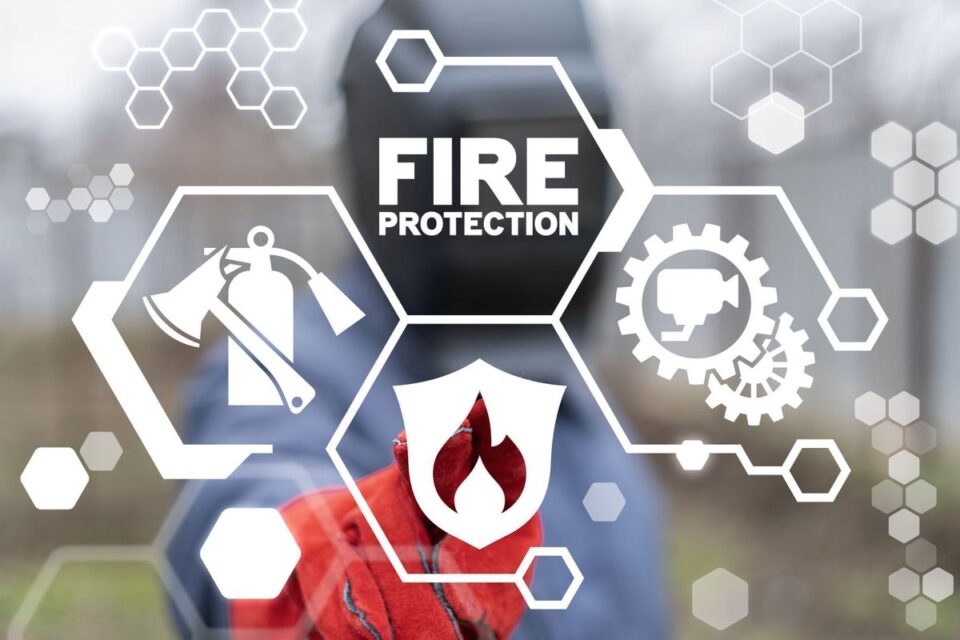Designing fire alarm systems in 2025 requires a forward-thinking approach to meet evolving safety standards and technological advancements. With buildings becoming smarter and regulations more stringent, fire alarm systems must balance innovation with reliability to ensure optimal protection.
Key considerations now extend beyond basic detection, incorporating integration with smart building systems, enhanced connectivity, and sustainability. Designers and engineers must anticipate future needs while adhering to current compliance requirements, making thoughtful planning more critical than ever.
Understanding Fire Safety Regulations for System Compliance
Designing fire alarm systems requires adherence to national, regional, and local fire safety codes to achieve full compliance and reliability. Core standards such as the NFPA 72 (National Fire Alarm and Signaling Code) guide system design, including installation, performance, and testing protocols. System designers must stay updated on changes to these codes for effective planning.
Local building codes often introduce additional requirements beyond national standards. These include specific zoning rules or occupancy requirements that dictate system configuration. Designers must incorporate these localized guidelines to ensure the system aligns with enforcement practices.
Some sectors, like healthcare and education, present specialized requirements regulated by legislation. For example, hospitals need fire alarm systems that account for patient evacuation challenges. Similarly, schools demand robust detection and notification tailored for large occupancies, enhancing protection for high-risk environments.
Advanced features or integrations, such as smart technologies, must remain compatible with compliance standards. If the fire alarm system uses IoT elements, they should align with cybersecurity protocols, ensuring regulatory approval while maintaining safety and functionality.
Critical Components of Modern Fire Alarm Systems
Modern fire alarm systems consist of essential components that ensure reliable detection, response, and communication during emergencies. Each element plays a specific role in enhancing system effectiveness and safety.
1. Fire Alarm Control Panel (FACP)
The FACP serves as the system’s central hub, managing sensor data and activating alarms. Advances in microprocessor technology enhance its processing speed and integration capabilities with smart building systems.
2. Detection Devices
Smoke, heat, and flame detectors form the core detection elements. Forbes forecasts increasing adoption of multi-sensor detectors, which combine various sensing technologies for reduced false alarms and faster threat identification.
3. Notification Appliances
Audible alarms, strobes, and voice evacuation systems ensure occupant awareness. These devices comply with ADA requirements, offering accessibility through synchronized visual and auditory alerts.
4. Manual Pull Stations
Manual pull stations provide a direct alarm activation option for building occupants. These are strategically placed near exits and high-traffic areas to meet NFPA 72 standards.
5. Communication Systems
Emergency communication systems integrate with fire alarms to deliver real-time instructions. IP-based technologies support seamless updates and remote management, ensuring timely occupant guidance during crises.
6. Power Supply Systems
Fire alarm systems rely on primary and backup power sources for uninterrupted functionality. These include batteries and generators, which maintain system operability during power outages.
7. Integration with Smart Building Technologies
Systems now interface with IoT devices, enhancing monitoring, diagnostics, and response capabilities. This integration optimizes performance and aligns with advanced design practices for 2025.
8. Compliance Features
To ensure adherence to fire alarm system design standards, components incorporate programmable settings and cybersecurity protocols. These measures secure system data while meeting evolving regulatory demands.
9. Environmental Sensors
Incorporating sensors to detect gases like carbon monoxide enhances safety. Such sensors are increasingly preferred in compliance-heavy environments, including hospitals and educational facilities.
System Layout: Balancing Coverage and Accessibility
System layout ensures fire alarm designs provide optimal coverage without compromising accessibility for maintenance and inspection. Proper placement of devices enables effective detection and minimizes response delays.
- Coverage Optimization: Position detectors strategically to meet coverage requirements outlined in the NFPA 72 and local codes. High-risk zones, such as kitchens, storage rooms, or mechanical areas, demand additional detection units to address increased incident probabilities.
- Accessibility Prioritization: Place fire alarm components where regular maintenance is feasible without disrupting business operations. Avoid hard-to-reach areas such as high ceilings unless absolutely necessary, as it complicates inspections and repairs.
- Device Spacing and Calibration: Follow spacing requirements between devices, ensuring proper sensitivity without detection overlap. For instance, heat detectors must avoid locations prone to temperature variances, like near HVAC vents or skylights.
- Centralized Control: Design layouts to enable efficient troubleshooting through the Fire Alarm Control Panel (FACP). Centralized positioning facilitates faster identification of faults and quick system resets.
- Integration with Architecture: Align device placements with structural elements to preserve building aesthetics and comply with architectural constraints. Pay attention in spaces like hotels or malls where aesthetic and functional considerations are equally important.
Modern fire alarm system layouts prioritize both safety and usability, creating designs suited to the environment’s specific demands.
Integration with Existing Building Infrastructure
Fire alarm system design in 2025 increasingly emphasizes seamless compatibility with existing building infrastructure. Systems must integrate without disrupting structural integrity or ongoing operations. Adaptation to current layouts, electrical systems, and communication networks ensures both cost-efficiency and streamlined functionality.
Designers prioritize alignment with existing electrical circuits to reduce extensive rewiring. If modifications are necessary, minimizing disruptions helps maintain operational continuity in occupied buildings. Fire alarm components, such as detection devices and notification appliances, integrate into pre-existing power arrangements using centralized control systems for optimal synchronization.
Compatibility with communication networks supports advanced features like emergency alerts and IoT connectivity. Incorporating technologies that sync with existing building management systems (BMS) enhances functionality, allowing centralized monitoring and control. For example, fire detection data can connect to HVAC systems to manage smoke containment during emergencies.
Physical integration considers structural elements like walls, ceilings, and ventilation. Devices align with architectural designs to ensure unobtrusive placement. When collaborating with contractors or architects, maintaining both aesthetic consistency and coverage efficiency is key.
Retrofitting legacy systems represents a significant challenge, as technological mismatches could limit functionality. Designers evaluate legacy infrastructure to assess compatibility with modern systems. Partnering with providers, such as forbel, helps ensure that upgrades align with both technological and regulatory requirements.
Advancements in Fire Detection Technologies for 2025
Fire detection technologies in 2025 incorporate cutting-edge innovation to enhance system accuracy, speed, and reliability. Multi-sensor detectors, combining smoke, heat, and gas detection, reduce false alarms and improve performance in complex environments such as industrial facilities and mixed-use buildings. Advanced imaging sensors also monitor flame and smoke patterns, enabling better detection in visually challenging areas.
AI-driven fire detection systems are increasingly adopted for analyzing real-time data, predicting hazards, and automating responses. These systems integrate machine learning to recognize fire indicators across diverse settings, improving response timeliness and minimizing disruption.
Wireless fire detection systems facilitate flexible installations, particularly in retrofitted or large-scale spaces. Using encrypted communication protocols, these systems ensure cybersecurity while providing seamless connectivity with centralized control panels.
IoT-connected detectors enhance system integration by sharing data with building management systems. These devices support predictive maintenance, real-time status monitoring, and remote diagnostics, enabling continuous operational efficiency.
Eco-friendly technologies now reduce environmental impact in fire alarm system design. Detectors replace harmful substances, such as halon gases, with sustainable alternatives. Energy-efficient components also extend system life cycles while lowering power consumption.
Voice alert systems provide detailed instructions in emergencies, improving occupant evacuation efficiency. These advancements align with evolving standards like NFPA 72, ensuring safety compliance in modern building designs.
Practical Tips for Designing Reliable Fire Alarm Systems
Designing fire alarm systems for 2025 demands a proactive approach that embraces innovation, compliance, and adaptability. By leveraging advanced technologies and aligning with evolving safety standards, designers can create systems that not only enhance protection but also integrate seamlessly with modern building infrastructures.
Balancing functionality, accessibility, and aesthetics ensures that fire alarm systems meet the unique needs of each environment without compromising usability. Staying informed about regulatory updates and prioritizing compatibility with existing systems will further streamline implementation and maintenance.
Ultimately, a well-designed fire alarm system serves as a critical safeguard, combining cutting-edge features with robust compliance to protect lives and property effectively.

